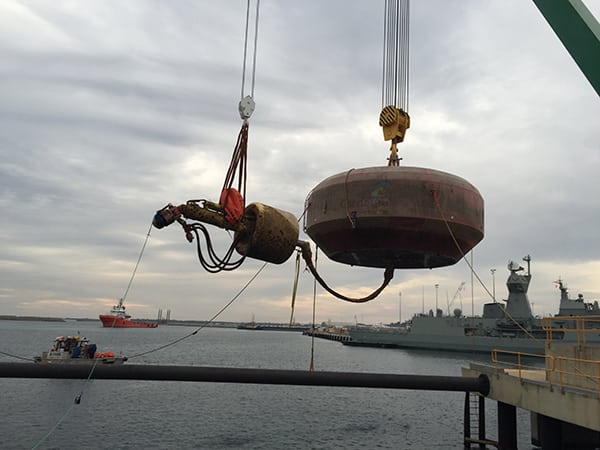Wave Energy: Size Matters
Australian firm Carnegie Wave Energy, operator of the Perth Wave Energy Project—the world’s first commercial-scale, grid-connected wave energy array—is on target to take its CETO technology to the next stage with a four-fold improvement on a dollar-per-MW basis, CEO Greg Allen said.
The Perth Wave Energy Project employs three 10-meter-diameter buoys that generate about 5% of the electricity used at a nearby military base on Garden Island off Western Australia. Allen said that the $30 million (US$23 million) CETO 6 project, the next stage in development, targeted for operations in 2017, is now fully funded and includes a three-unit array with 3 MW total capacity. Electricity generated from the project will be sold under a power purchase agreement with the Australian Department of Defence.
The existing CETO 5 project, named for a Greek sea goddess, also has the ability to produce 150 cubic meters of desalinated water per day (Figure 7). Allen noted that military bases and remote islands typically face issues of high power cost, freshwater scarcity, and reliance on expensive imported fossil fuels for generation. Wave energy can produce both zero-emission power and directly desalinated water (when excess power is available), which makes the technology attractive to island communities, he said.
 |
| 7. Wave motion. The Perth Wave Energy Project off Western Australia uses three 10-meter buoys to generate electricity and desalinated water for an Australian military base. Courtesy: Chris Webb |
CETO 6 represents the next step in the project and will be operating 16 kilometers (km) offshore, compared to 3 km for the current project. This will expose it to the full force of the southern ocean, where the potential energy is greater. Allen said Carnegie is currently looking at sites for 10-MW installations.
While feed-in tariffs will be a determinant in the technology’s viability, Allen said remote island locations could be the first to benefit from it. “Where electricity production and potable water are issues that go hand in hand, and where diesel power is one of the few options, we expect the technology to catch on,” he noted.
—Chris Webb is a freelance journalist.